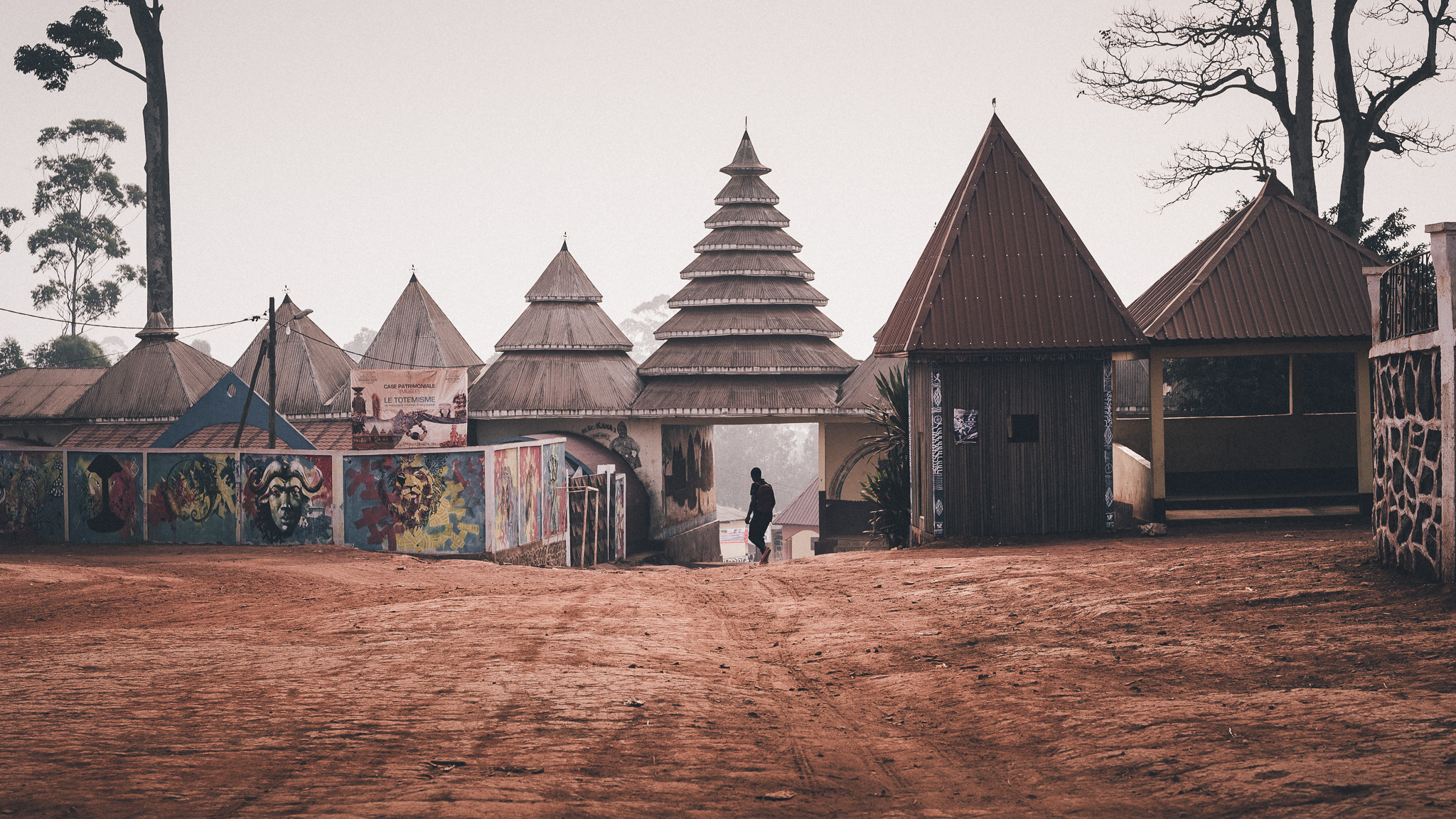
The journey through the Bamileke region of western Cameroon was more than just a road trip. It was a chance to rediscover a culture I had often passed by but never fully explored. My parents had come to visit me, and together we set off from Douala, making our way through the highlands. After a night in the Tockem chiefdom, we resumed our journey toward Bafoussam and Foumban, passing through landscapes rich with history and tradition.
That morning, as we drove along a red dirt track, the first light of day cast a golden glow over the land. Suddenly, a striking scene caught my eye: a grand entrance with traditional triangular roofs, a symbol of Bamileke nobility. Only the notables of the tribe have the right to construct such an entrance, a visual testament to the hierarchy and traditions that define this region. At that very moment, a young man walked past, adding a human presence to the already compelling composition. I knew I had to capture it.
Rushing for this shot of the Bafou chiefdom
With no time to waste, I pulled over, rushed out of the car, grabbed my camera from the trunk, and ran to the best vantage point I could find. I was excited, caught in the thrill of capturing a perfect frame. The light, the architecture, and the passerby all aligning for a fleeting instant. But I couldn’t linger. My parents were waiting in the car, and the road ahead still held many discoveries.
At the time, I barely had a moment to reflect. But when I later uploaded the photograph to my computer, all the memories came flooding back. This wasn’t just an image; it was a window into a history I had only begun to understand
Looking at the photograph now, it symbolizes more than just a moment of good lighting or a well-composed shot. It reminds me of the journey I shared with my parents and the deeper connection I was able to make with a culture I had previously only glimpsed from a distance. Though our visit was brief, it left an impression, one that I can now relive through this image, a silent testament to the traditions and stories that continue to shape the Bamileke people.


